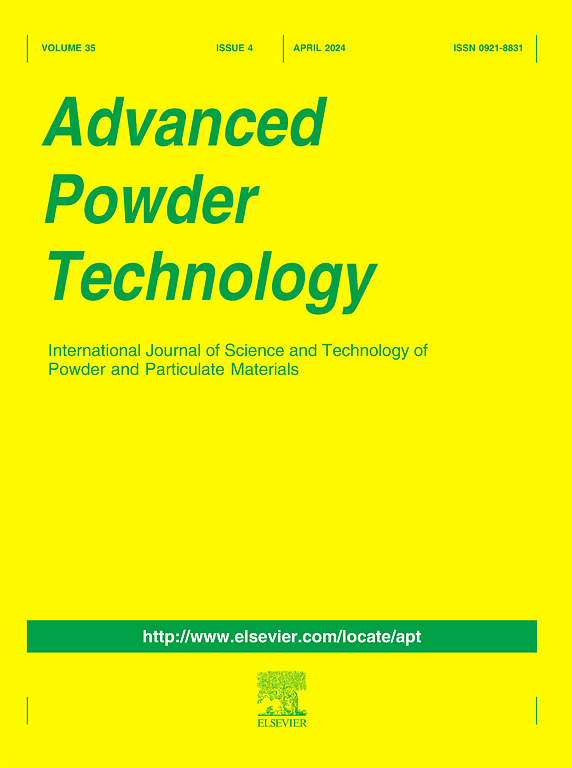Changes in full characteristics of spontaneous coal combustion under influence of temperature-driven CO2 desorption
IF 4.2
2区 工程技术
Q2 ENGINEERING, CHEMICAL
引用次数: 0
Abstract
In coal mine goafs, spontaneous coal combustion disaster is a heating process caused by coal oxidation. Many experiments have investigated the variation of coal oxidation characteristics under different inert conditions; however, the time precondition of the inert conditions is usually ignored. In this study, a porous material adsorbed with CO2 is mixed with coal for the oxidative heating experiment to investigate its full influence on the coal oxidation characteristics. The experimental results show that CO2 proactively desorbs from the porous material at a small increase in temperature. In the mixture sample, the CO2 concentration increases sharply to 57080 ppm around 80 ∼ 90 °C, and the crossing point temperature moves to the high-temperature region with a maximum delay of 26.3 %, significantly slowing down the oxidation process of the coal. In addition, the composite decision index of the mixture sample increases by a maximum of 10.91 %, and the spontaneous combustion tendency of the coal changes from “Spontaneous combustion” to “Non-prone to spontaneous combustion”, essentially decreasing the spontaneous coal combustion capacity. The temperature-driven CO2 desorption from the porous material dilutes the oxygen concentration to hinder the coal-oxygen composite reaction from the very beginning of coal oxidation process, presenting an advanced and efficient preventive effect.

温度驱动CO2解吸影响下煤自燃全特性的变化
在煤矿采空区,煤的自燃灾害是煤氧化引起的加热过程。许多实验研究了不同惰性条件下煤氧化特性的变化;然而,惰性条件的时间前提往往被忽略。本研究将吸附CO2的多孔材料与煤混合进行氧化加热实验,充分考察其对煤氧化特性的影响。实验结果表明,在温度小幅升高的情况下,CO2从多孔材料中主动解吸。混合样品中,CO2浓度在80 ~ 90℃左右急剧上升至57080 ppm,交叉点温度向高温区域移动,最大延迟26.3%,显著减缓了煤的氧化过程。此外,混合试样的综合决策指数最大提高了10.91%,煤的自燃倾向由“自燃”变为“不易自燃”,本质上降低了煤的自燃能力。多孔材料中温度驱动的CO2解吸稀释了氧浓度,从煤氧化过程一开始就阻碍了煤-氧复合反应,具有超前高效的预防作用。
本文章由计算机程序翻译,如有差异,请以英文原文为准。
求助全文
约1分钟内获得全文
求助全文
来源期刊

Advanced Powder Technology
工程技术-工程:化工
CiteScore
9.50
自引率
7.70%
发文量
424
审稿时长
55 days
期刊介绍:
The aim of Advanced Powder Technology is to meet the demand for an international journal that integrates all aspects of science and technology research on powder and particulate materials. The journal fulfills this purpose by publishing original research papers, rapid communications, reviews, and translated articles by prominent researchers worldwide.
The editorial work of Advanced Powder Technology, which was founded as the International Journal of the Society of Powder Technology, Japan, is now shared by distinguished board members, who operate in a unique framework designed to respond to the increasing global demand for articles on not only powder and particles, but also on various materials produced from them.
Advanced Powder Technology covers various areas, but a discussion of powder and particles is required in articles. Topics include: Production of powder and particulate materials in gases and liquids(nanoparticles, fine ceramics, pharmaceuticals, novel functional materials, etc.); Aerosol and colloidal processing; Powder and particle characterization; Dynamics and phenomena; Calculation and simulation (CFD, DEM, Monte Carlo method, population balance, etc.); Measurement and control of powder processes; Particle modification; Comminution; Powder handling and operations (storage, transport, granulation, separation, fluidization, etc.)
 求助内容:
求助内容: 应助结果提醒方式:
应助结果提醒方式:


